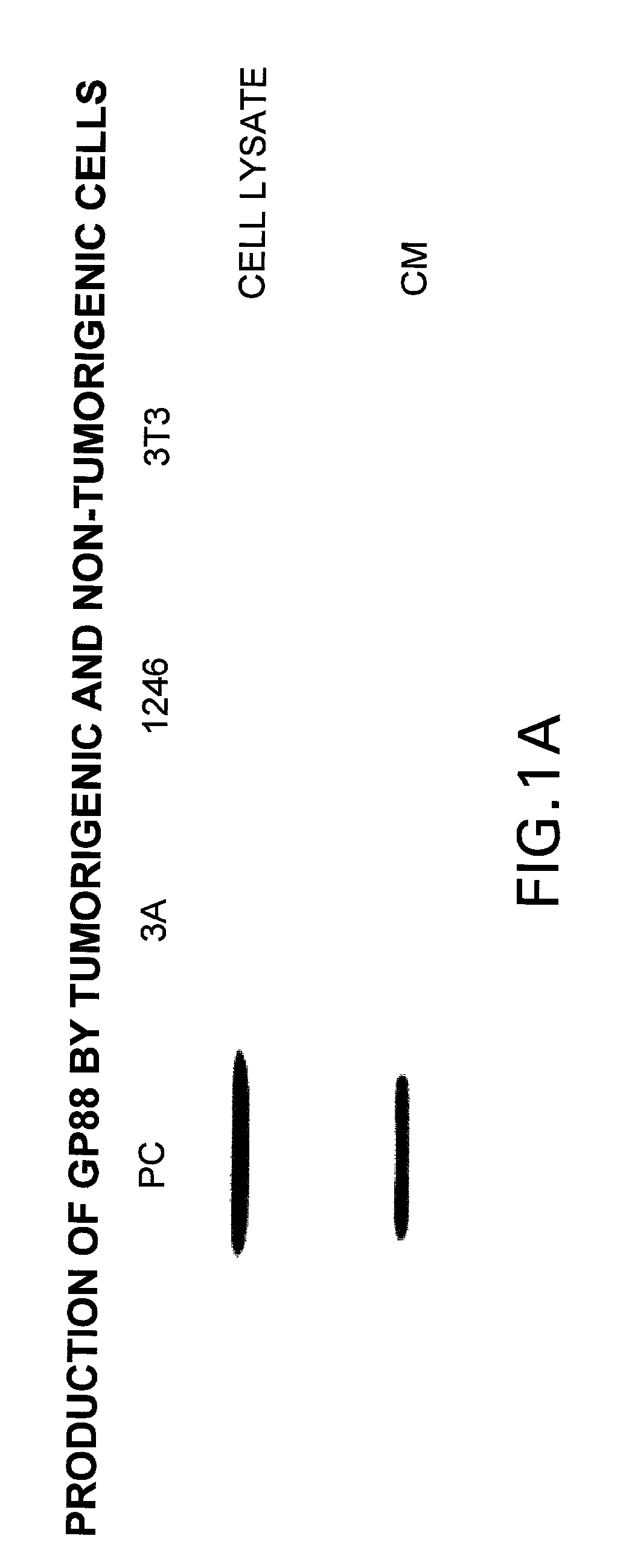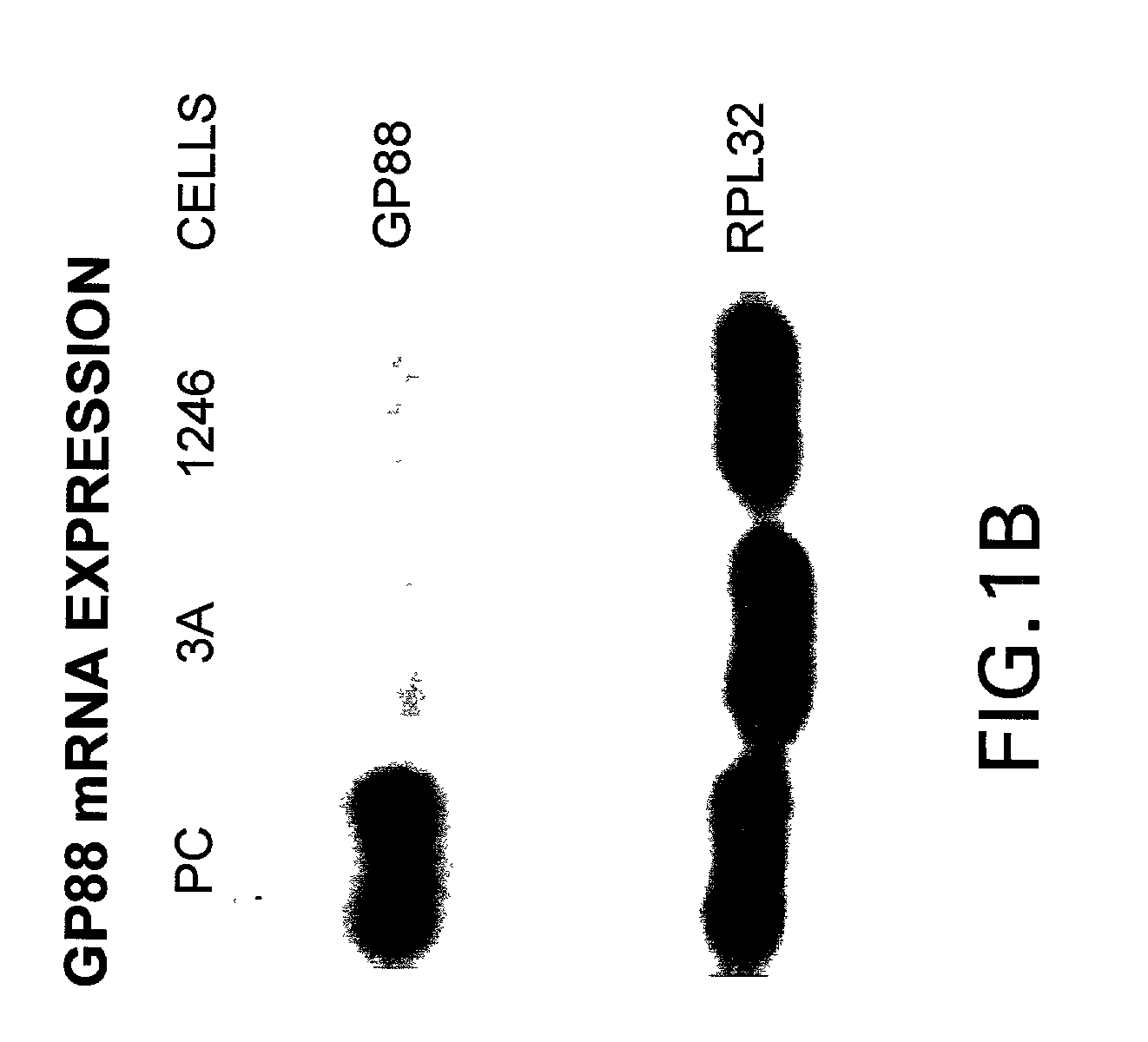Methods and kits for diagnosing tumorigenicity and determining resistance to the antineoplastic effects of antiestrogen therapy
a technology of anti-estrogen therapy and tumorigenicity, which is applied in the direction of immunoglobulins, peptides, drugs against animals/humans, etc., can solve the problem that the status of tumor cells on the estrogen receptor in breast cancer patients does not provide sufficient information
- Summary
- Abstract
- Description
- Claims
- Application Information
AI Technical Summary
Benefits of technology
Problems solved by technology
Method used
Image
Examples
example 2
DETERMINATION OF TAMOXIFEN RESISTANCE
[0154] We have shown that inhibiting the expression of GP88 by antisense cDNA transfection in ER negative breast cancer cells resulted in inhibition of tumorigenicity indicating the importance of GP88 overexpression in the tumorigenic properties of breast cancer cells. Because breast cancer is heterogeneous in nature and can affect various cellular functional compartments of the gland, it is preferable to examine biopsies representative of the various stages of the progression model for expression of GP88. It has been shown that detection of tumor markers is the preferred approach to evaluate and predict the clinical course of breast cancer at the time of diagnosis or primary treatment and is important in determining the choice of therapy. These studies are directly relevant to women's health because they provide an analysis of the novel growth factor PCDGF as a potential prognosis marker of breast cancer.
[0155] Expression of GP88 was followed by...
PUM
| Property | Measurement | Unit |
|---|---|---|
| density | aaaaa | aaaaa |
| density | aaaaa | aaaaa |
| concentrations | aaaaa | aaaaa |
Abstract
Description
Claims
Application Information
 Login to View More
Login to View More - R&D
- Intellectual Property
- Life Sciences
- Materials
- Tech Scout
- Unparalleled Data Quality
- Higher Quality Content
- 60% Fewer Hallucinations
Browse by: Latest US Patents, China's latest patents, Technical Efficacy Thesaurus, Application Domain, Technology Topic, Popular Technical Reports.
© 2025 PatSnap. All rights reserved.Legal|Privacy policy|Modern Slavery Act Transparency Statement|Sitemap|About US| Contact US: help@patsnap.com



